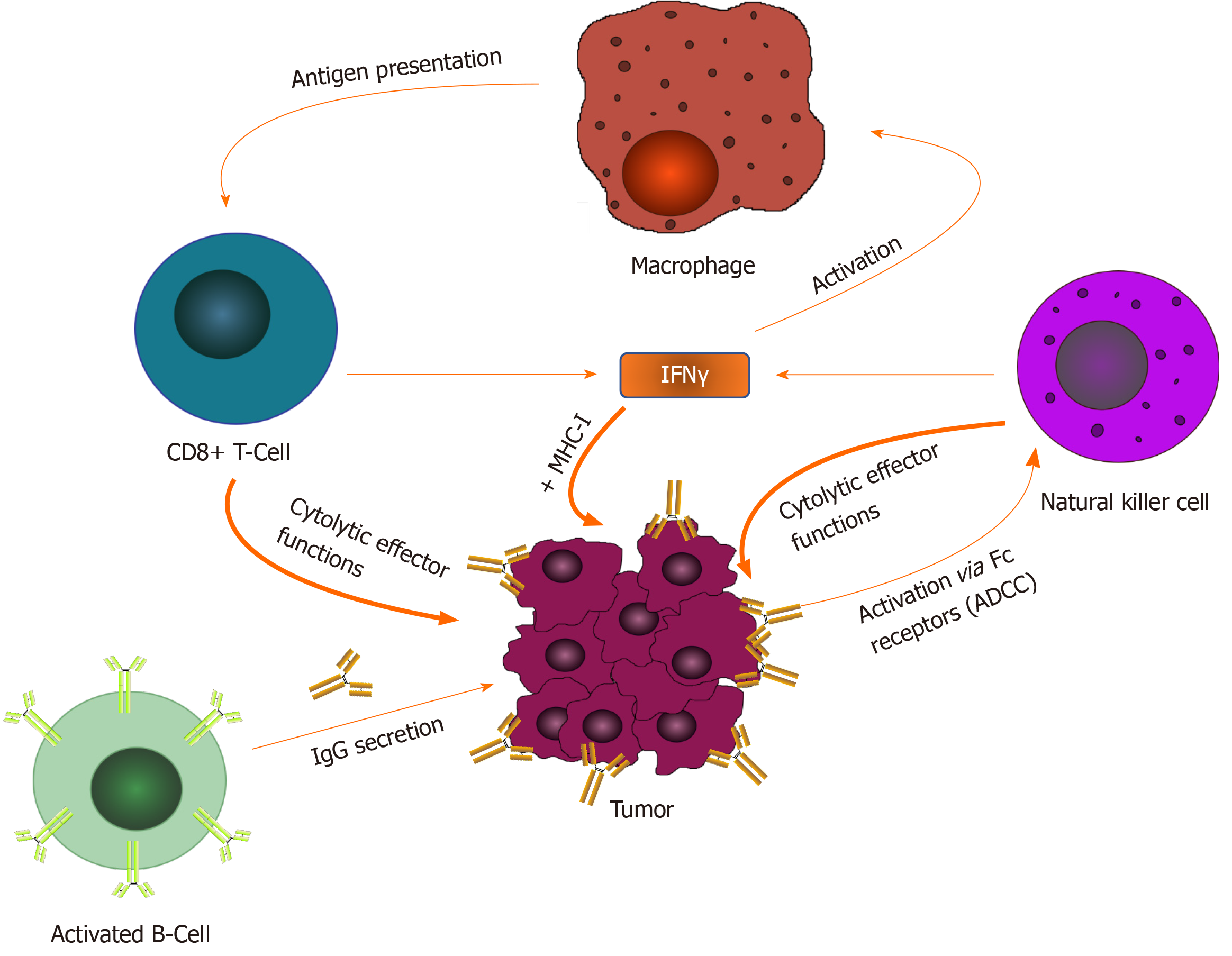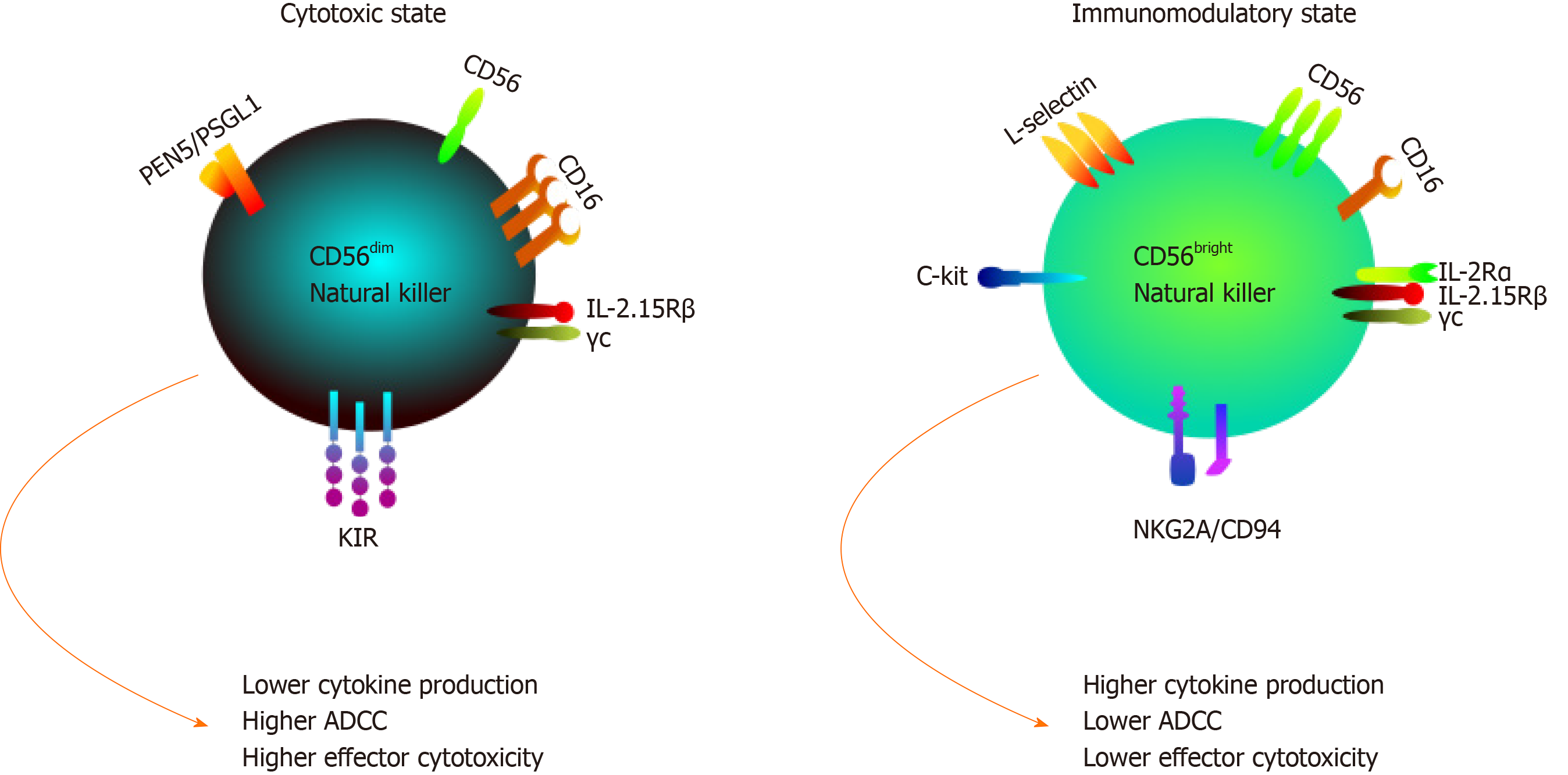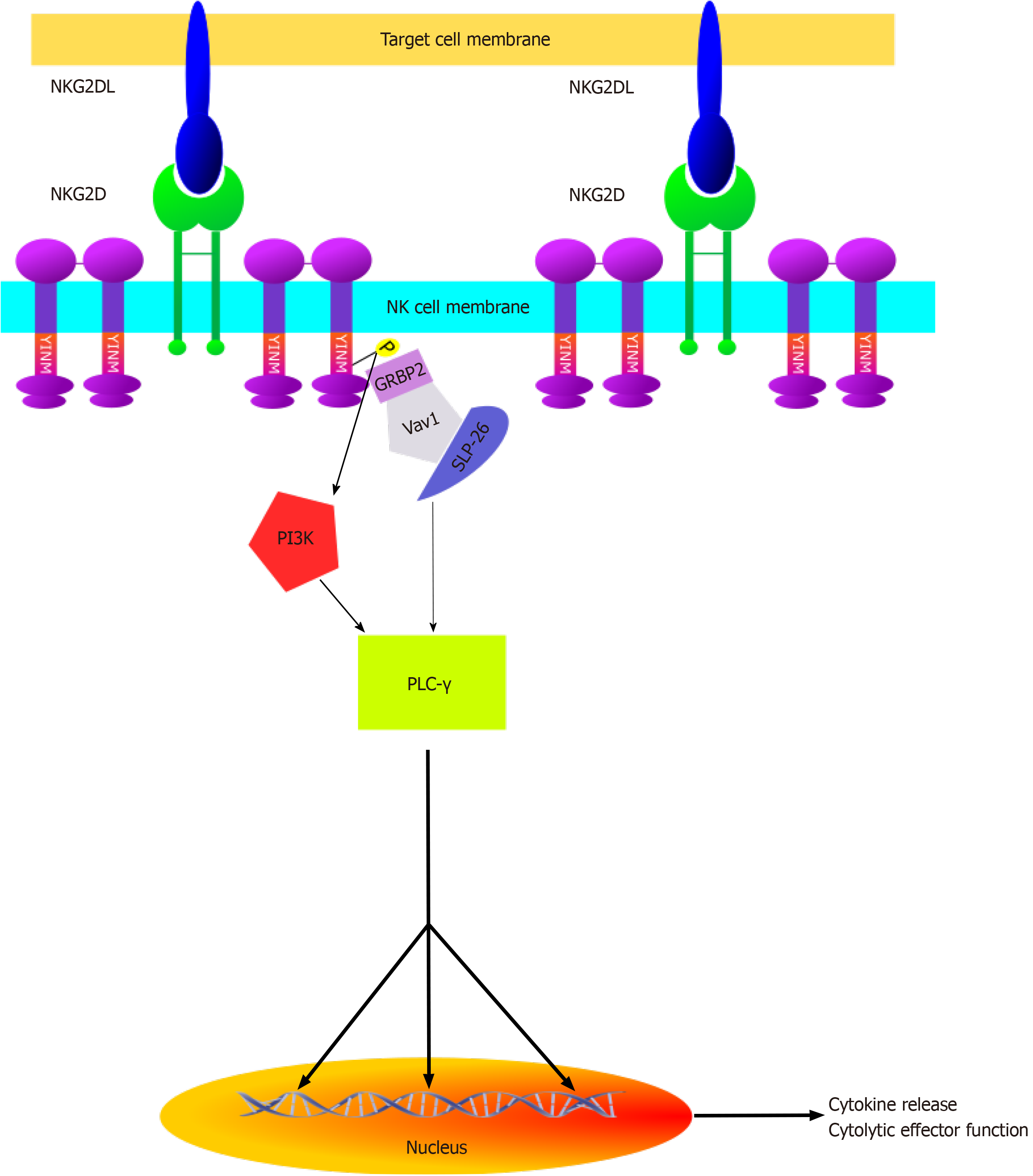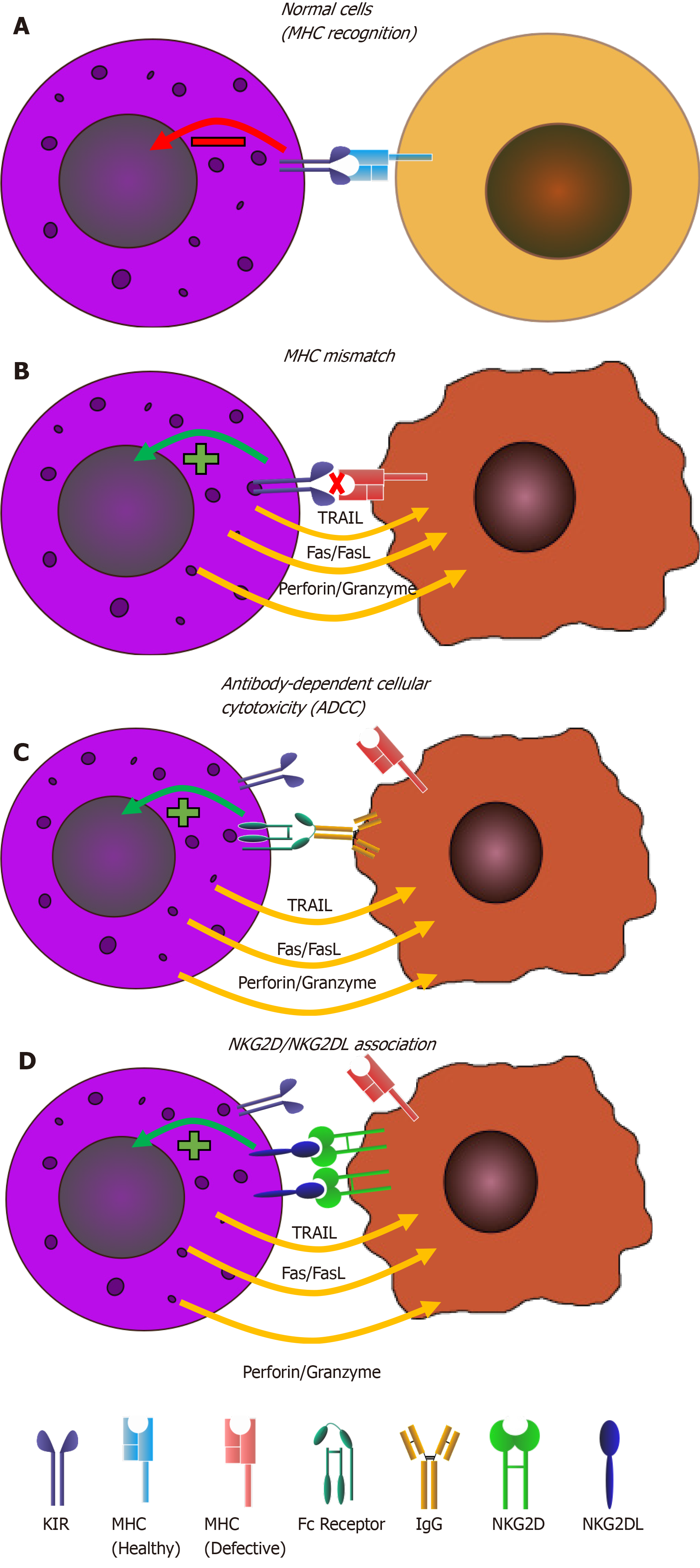Copyright
©The Author(s) 2020.
World J Clin Oncol. Jul 24, 2020; 11(7): 464-476
Published online Jul 24, 2020. doi: 10.5306/wjco.v11.i7.464
Published online Jul 24, 2020. doi: 10.5306/wjco.v11.i7.464
Figure 1 Adaptive/innate intricate relationship.
A demonstration of the interplay between various adaptive (IgG, cytotoxic T-lymphocytes, etc.) and innate (Natural killer cells, macrophages, etc.) factors in the mounting of a full antitumor immune response via cytokines such as interleukin-2 and interferon-gamma. IFNγ: Interferon-gamma: MHC-1: Major histocompatibility complex-1; ADCC: Antibody-dependent cellular cytotoxicity.
Figure 2 Natural killer cell subsets differ both functionally and phenotypically.
Functionally, CD56dim natural killer (NK) cells are cytotoxic cells that produce low levels of cytokines in response to monokine stimulation. Yet, they are potent mediators of cytotoxic effector functions due to high levels of CD16 surface expression. Meanwhile CD56bright NK cells are known as immunoregulatory cells that produce high levels of cytokines such as interferon-gamma, interleukin-10 and transforming growth factor-β upon activation. It has low expression of CD16, thus performing reduced cytotoxic functions. Morphologically, CD56dim and CD56bright exhibit differential receptor profiles; for instance CD56dim NK cells exhibit much higher levels of killer Ig-like receptors, whereas resting CD56bright NK cells have high expression of CD94/NKG2A. ADCC: Antibody-dependent cellular cytotoxicity; IL: Interleukin; KIR: Killer Ig-like receptor.
Figure 3 Natural killer lectin-like group 2, member D mode of action.
Illustration of activation cascades initiated by the active conformations of natural killer lectin-like group 2, member D receptors in natural killer cells. NKG2D: Natural killer lectin-like group 2, member D; NKG2DL: Ligands of natural killer lectin-like group 2, member D.
Figure 4 Different modes of natural killer cell activation.
Natural killer cell differential modes of activation when encountered with A: Healthy cells; B: Diseased cells with natural killer Ig-like receptors mismatch; C: Antibody-coated diseased cells; D: Diseased cells expressing natural killer lectin-like group 2, member D. NKG2D: Natural killer lectin-like group 2, member D; NKG2DL: Ligands of natural killer lectin-like group 2, member D; MHC: Major histocompatibility complex; KIR: Killer Ig-like receptor.
- Citation: Abdel-Latif M, Youness RA. Why natural killer cells in triple negative breast cancer? World J Clin Oncol 2020; 11(7): 464-476
- URL: https://www.wjgnet.com/2218-4333/full/v11/i7/464.htm
- DOI: https://dx.doi.org/10.5306/wjco.v11.i7.464












